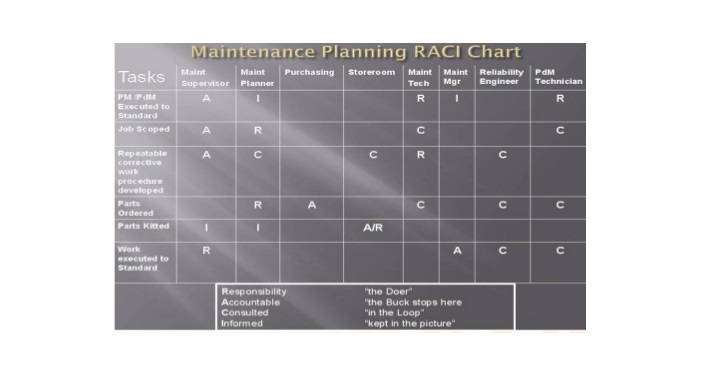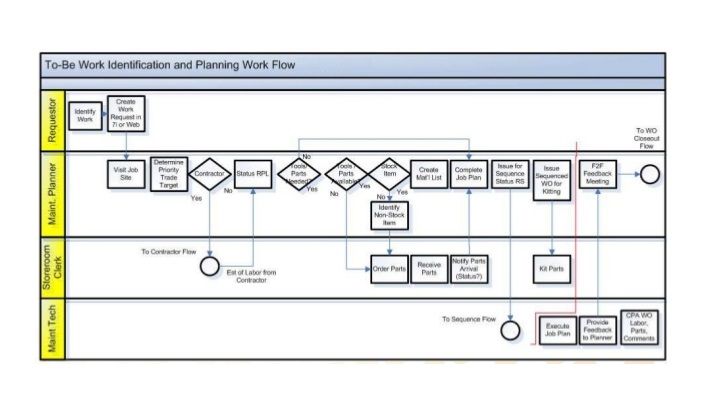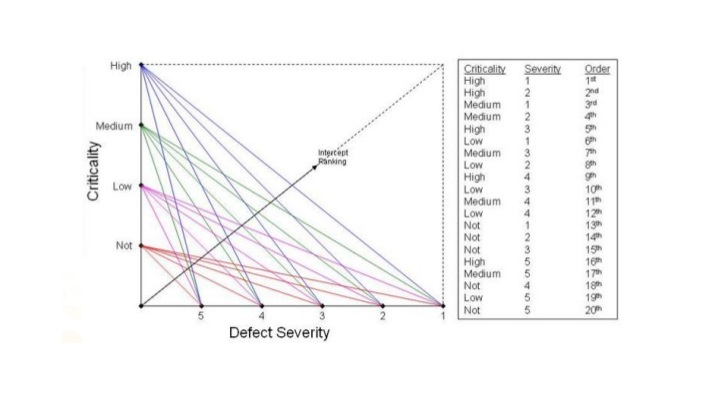This article about the successful maintenance planning and scheduling will help understand the proactive maintenance planning and scheduling approach.
Document will also help in providing a training program for maintenance teams that is educational, exciting, and informative.
The guidelines shall ensure the provision of a training environment that is conducive for training the maintenance workers.
Maintenance planning is the process of identifying the parts, tools, procedures, standards and specifications required for effective maintenance work, increasing wrench time.
In fact planning is key to the success of precision maintenance.
Planning and scheduling are two different functions that are dependent on each other.
Maintenance Scheduling
Scheduling of maintenance, operations, contractors, engineering, and safety personnel to be in the right place at the right time for the right work synchronized together that is intended to minimize interruption to operations and production.
Proper scheduling helps in performing the right maintenance work at the right time.
Common Maintenance Issues
Most maintenance staff only perform 2-4 hours of actual maintenance a day which:
– Effective direct work is low
– Caused by lack of effective planning
– Caused by lack of effective scheduling
70-80% of equipment failures are human-induced,
– Not knowing specifications
– Not having the right part at the right time
– Improperly handling and installing bearings (parts)
– No repeatable, effective PM, Corrective, Lube Procedures
Some Known Facts about Maintenance Planning & Scheduling
Schedule Compliance – 80-90%
Percent of Planned Work – 90%
PM Execution – 15%
Results from PM Execution – 15%
PdM Execution – 15%
Results from PdM Execution – 35%
Wrench Time (typical company) – 18-30%
Wrench Time (World Class company) – 55% +
Maintenance Cost (reactive company) – 19% / RAV
Maintenance Cost (World Class company) – 1.7% / RAV
What Is a Failure?
There are two types of failures:
“A functional failure is the inability of an item (or the equipment containing it) to meet a specified performance standard.
A potential failure is an identifiable physical condition which indicates a functional failure is imminent.”
– F. Stanley Nowlan and Howard F. Heap, Reliability-Centered Maintenance, Department of Defense Report Number AD-A066-579, December 1978
The summary of 8 Steps for Planning
1. Identify External Distracters
Poor spare parts and inventory controls
Conflicting ideas of what “planning” is
Planners taken off job, put on tools, or involved in daily activities (parts chaser, facilitating daily work)
Maintenance and Production not acting as a team
No planning process, unclear expectations, unclear roles and responsibilities
Maintenance leadership not following the plan
Emergency/urgent work too high
Lack of discipline
2. Educate the Team
Coaching is not just for Planners but also:
- Plant/Operations Leadership
- Frontline Operations Leadership
- Maintenance and Reliability Leadership (all levels)
- Planners
- Maintenance Personnel
- Operators
3. Develop RACI Chart for Maintenance Planning

4. Develop Guiding Principles for Planning
The planners focus on future work and maintain at least two weeks of work backlog that is planned, approved, and ready to schedule/execute
Planners do not chase parts for jobs in progress
Supervisors and crew leads handle the current day’s work and problems – coordination
Scheduling does not occur until parts are kitted
Maintain a stable/non-fluid Criticality Index
Improve wrench time through cooperation with everyone
5. Define the Planning Process

6. Prioritize Work to Be Planned Intercept Ranking

7. Develop Effective/Repeatable Procedures
Repeatable Process
Capture Knowledge
Train New Employees
Reduce Human-Induced Failures
8. Measure Effectiveness
% of Work Orders Planned (Trending Up)
percent of Planned Work (90%) – Proactive (90%) – Reactive (2%) – Requires No Planning (8%)
% of Work Orders with Estimated to Actual Labor Hours (+/- 10%)
Backlog – measured in labor hours by week – Ready to Schedule (2-4 Weeks) – Total Backlog (6-8 Weeks)
% of WOs with Comments/Recommendations
PM Compliance (Critical Assets – 100%)
Discover more from Preventive Maintenance Procedure
Subscribe to get the latest posts sent to your email.


